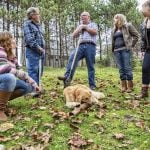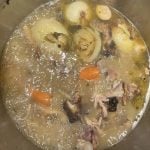SWANSON, Sask. – Ponies provided Walt Smith with a good living for more than 20 years.
They also provided hours of sport and entertainment at races in Canada and the United States.
Smith, 98, is the former secretary of the Saskatchewan Pony and Chuck Wagon and Chariot Association.
He can remember the heyday of the sport when world championships were held annually at Pion-Era in Saskatoon and races attracted as many as 36 teams to Swift Current, Sask., and 50 to Saskatoon.
He once had as many as 50 brood mares on his farm near Swanson, all less than 1.2 metres in height, and sold ponies for $500 apiece.
Read Also

Alberta crop diversification centres receive funding
$5.2 million of provincial funding pumped into crop diversity research centres
He bought his first pony at age 12 for $15, rode it all summer and sold it in the fall for $42.50.
“So I could see there was money in it,” said the longtime trader, who rode horses until he was 90.
“Ponies made more money for me than the cattle,” said Smith, who raised about 50 head of cattle and bought, sold, bred and trained horses and ponies.
He and his wife, Lillian, have a daughter, Sandy Short, who was an award winning trick rider. Her daughter, Leann Weyh, continues to trick ride in Oklahoma.
Smith said the market eventually went “kaput,” small ponies fell out of favour and the association splintered into numerous groups representing ponies crossed with Thoroughbreds.
“Too many people got into it and flooded the market,” Smith said.
Pony racer Bob Ostrom of Zealandia, Sask., said the ponies were a star attraction in the early years at home and farther afield.
He took his team to Texas and Washington to race, where they were well received and highly competitive.
“We were top five all the time,” he said.
He preferred the smaller ponies, calling them well-mannered and hardy.
“You could run them all summer.”
Ostrom said ponies became less hardy when they were bred with Thoroughbreds to increase their size above one metre, forcing drivers to take more than one team to events.
“The new ones get body sore and break down because they have so much Thoroughbred in them.”
He speculated that the little ponies’ overwhelming success was one reason for their demise because they were hard to beat.
As well, some association members started favouring the larger ponies, which Ostrom said was a loss to the sport.
The organization was founded in 1956 by John McLeod, Garrett Nyholt, Harvey Claypool, Cy Udell and Irwin Rath after an exhibition of pony racing in North Battleford, Sask., the same year.
Highlights included marquee events at Medicine Hat, Alta., Swift Current, Saskatoon and North Battleford. Four ponies raced on a chuck wagon team and two raced with chariots, with four teams to a heat depending on the size of the track.
As association secretary, Smith hired judges and timers, started races on horseback and managed prize money.
He recalled being responsible for $12,000 in prizes in the 1960s at Medicine Hat. The event ended late and Smith was forced to take the money to dole out at the next show.
When he got to Duck Lake, Sask., he found two of his tires had been slashed. He figured someone was following him with the intention of robbing him when the tires blew.
Another time he was crossing a river en route to Star City, Sask., with his truck and ponies. The St. Louis ferry operator had misjudged the weights and the ferry sank. Smith drove his truck the short distance to the bank with water coming in the back of the truck box and hauled the ferry to shore.
Wrecks occasionally occurred in the four-pony chuck wagon and two-pony chariot events.
Smith said ponies died when a driver blinded by dust drove his rig into a power pole beside the track. He also remembers ponies breaking legs on two occasions and having to be euthanized.
Rain also caused animals to slip on the track, but the show usually went ahead in all kinds of weather.
“Anytime they had an audience, there was a race,” he said.
Prize money rarely covered pony owners’ costs, but the payback was doing what they loved and the camaraderie of camping out and travelling with other teams and riders to races each summer.














